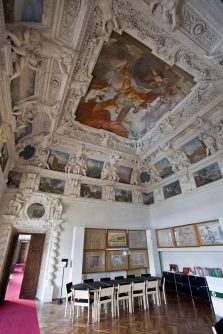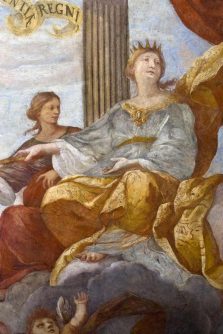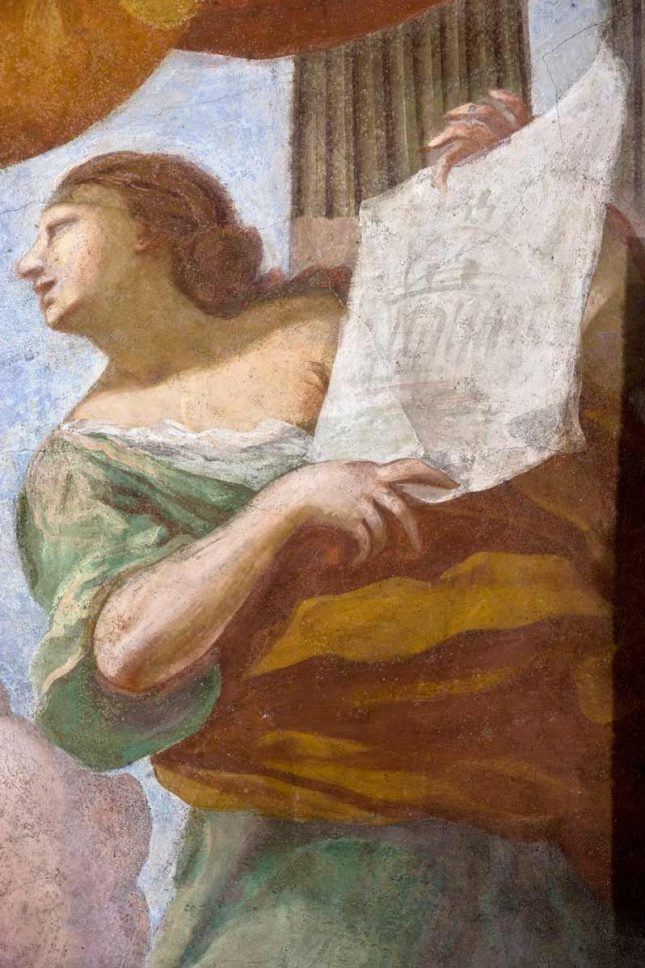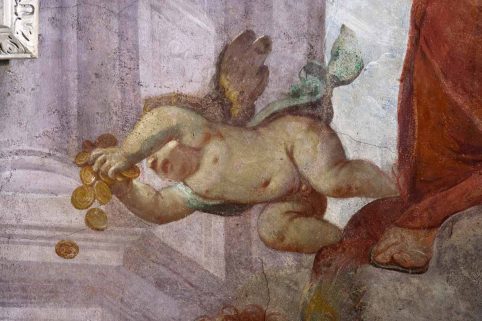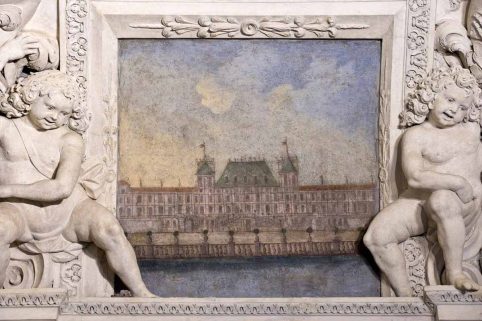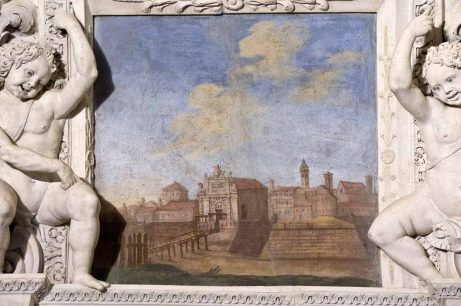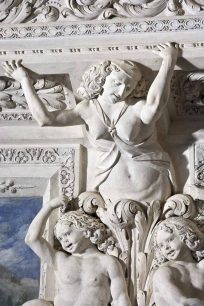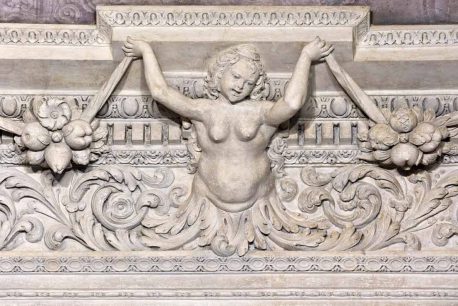The stucco-work in this room was done by Alessandro Casella. The apparent stillness of the decoration around the large central painting and the series of twelve scenes on the vault, is counter-balanced by the vivacious group of stucco putti holding up caryatids (statues of women). The highest border on the walls is brought to life by the ‘metamorphic qualities’ of the lateral volutes in the form of satir head.
The power of the sovreign is the subject of the central painting seen through his liberal activities in patronizing the royal buildings: this very buildings, drawn as a project on a cartouche, are indicated by the sceptre of the sovreing as if already completed.
In the paintings underneath we see featured, before the Theatrum Sabaudiae in 1682, several stately buildings and urban scenes which reflect the purchases made by Carlo Emanuele I or Vittorio Amedeo and Cristina. We can recognise il Palazzo Ducale and Piazza Castello, the Vitozzi church S. Maria al Monte dei Cappuccini and the project by Vittorio Amedeo I for a new palace in the city adjacent to the Dome and for use by the prince heir to the throne. The late sixteenth century suburban residence at Mirafiori seen from the garden is the next subject on the west wall. The new duke had started plans to extend it, but these were interrupted with his death in 1637. The next subject was the Via Po before its reconstrution into omogeneous arcades by Amedeo of Castellamonte, dominated by the Church of the Minimi Fathers of San Francesco da Paola was set up by Cristina di Francia in 1632. The last painting represents the eminent Porta Nuova complex, build by Carlo di Castellamonte in 1620 at the extreme end of south extension of Turin. Apart from city scenes, there were also territorial landscapes, showing works by the Duke intended to protect religious orders both in churches and in isolated mountain retreats and scenes on the duke’s initiative to fortify cities in the low-lands; recognisable are Trino with its quadrangle citadel; Asti with its double city walls and, probably, Villanova d’Asti.
In the paintings which make up the final border on the walls the scenes depicts, landscapes. The doors to this room boast two spiral columns which frame them and support a fastigium with corbels and putti which are around a circular frame and mirror.

